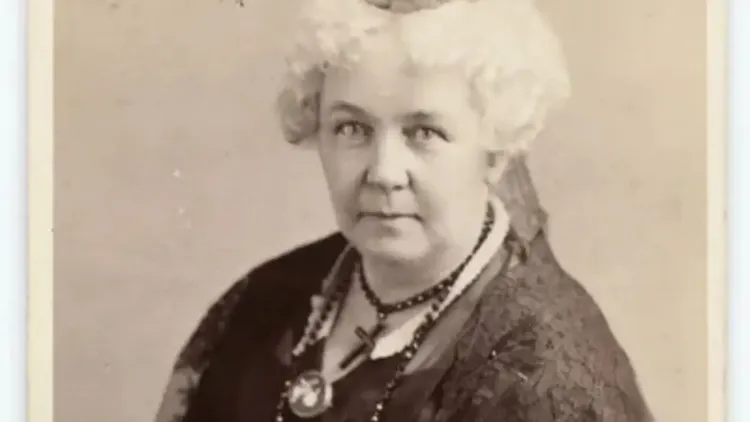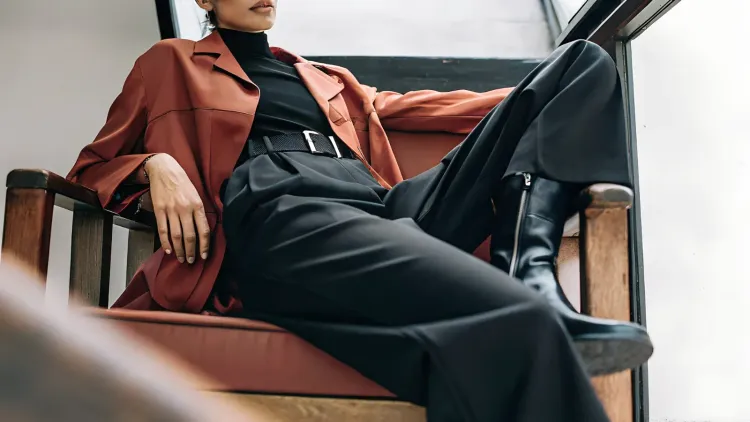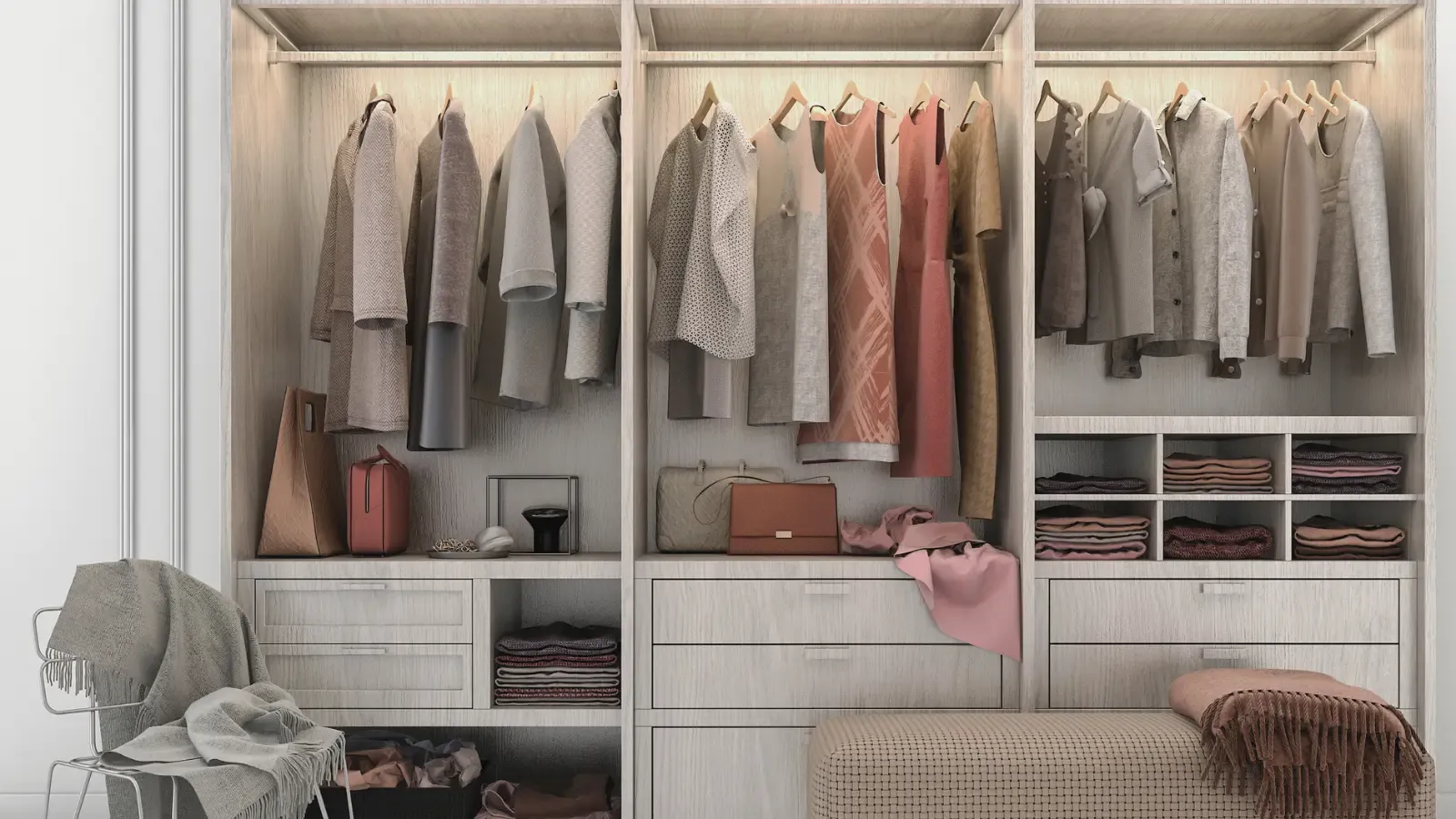
How to Build Your Confidence Capsule Wardrobe (Even on a Budget)
This post contains affiliate links. When you purchase through our links, we may earn a small commission at no extra cost to you. This helps support our blog and allows us to continue creating content you resonate with! We always suggest things we've tried and already love!
Most of us have closets bursting with clothes and still feel like we have nothing to wear. Sound familiar? You're standing in front of a packed wardrobe at 7:45 AM, already running late, cycling through the same three "safe" outfits because everything else feels wrong, doesn't fit quite right, or requires too much mental energy to style.
I've been there. Actually, I lived there for years.
The turning point came when I realized the problem wasn't that I needed more clothes-it was that I needed the right clothes. Enter the confidence capsule wardrobe: a curated collection of pieces that work together seamlessly, fit you perfectly, and make you feel like the most powerful version of yourself.
This isn't about minimalism for minimalism's sake or following someone else's arbitrary "33-item wardrobe" rule. It's about intentionality. It's about building a wardrobe where every single piece earns its place, making you feel confident, capable, and authentically yourself.
What Is a Confidence Capsule Wardrobe?
A confidence capsule wardrobe is different from a traditional capsule wardrobe in one crucial way: it's not just about having fewer pieces that mix and match. It's about having pieces that empower you.
Traditional capsule wardrobes focus on:
- Minimalism
- Versatility
- Neutrals
- Cost-effectiveness
A confidence capsule wardrobe includes all of that, but adds:
- Personal style expression
- Fit that makes you feel amazing
- Statement pieces that spark joy
- The "confidence test" for every item
Think of it as Marie Kondo meets Anna Wintour. Yes, your clothes should spark joy-but they should also make you feel like you can conquer the boardroom, nail the presentation, or walk into any room like you own it.
The Four Foundational Principles
You can also read: The One Trait You Need To Have In Order To Succeed
The most important thing you should know when building a confidence capsule isn't about copying someone else's style-it's about understanding the principles that make any outfit work.
Principle 1: Start with a Solid Neutral Foundation
Before you buy that statement coat or those amazing red shoes (well, you should, I've got them and I love them!), you need your basics locked down. I know, I know-basics are boring. But here's the thing: basics are only boring when they don't fit properly or aren't actually in colors that work for you.
The Essential Neutrals
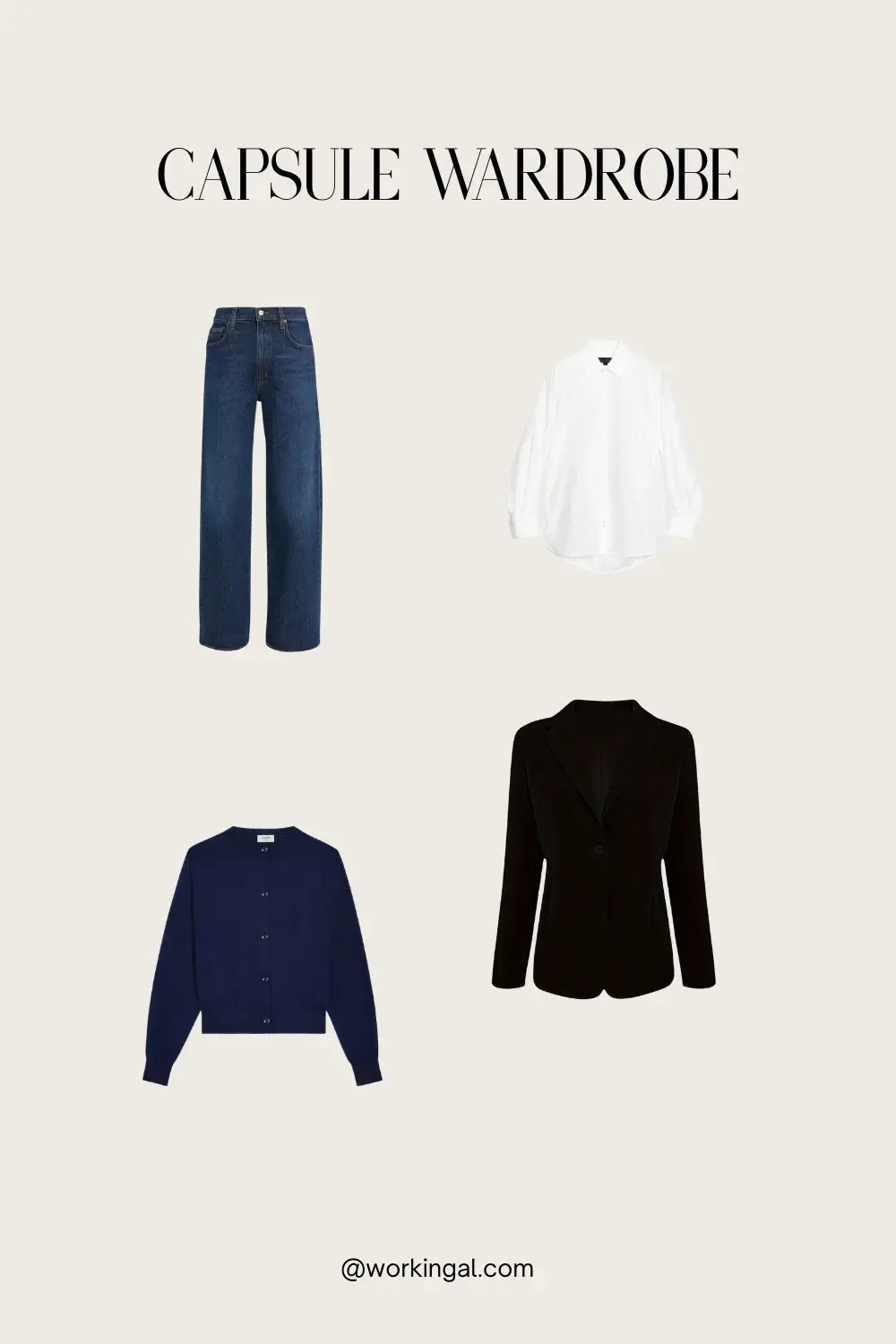
White button-down shirt - This is non-negotiable. Find one that fits your shoulders properly, doesn't gape at the bust, and hits at a flattering length.
Perfect-fitting jeans - Classic cut. Whether you prefer straight leg, wide leg, or a slight boot cut, the key is that they fit your waist without gapping and make you feel confident from behind.
Neutral trousers - Beige, camel, or gray. High-waisted and well-tailored. These are your "serious business" pants that you can dress up or down depending on what you pair them with.
Black pieces - A black belt, black loafers or pumps, a black bag. Black is your wardrobe's anchor. It adds structure and sophistication to any outfit without competing with your statement pieces.
Layering basics - A quality cardigan, a blazer that actually fits, a simple pullover sweater. These are your workhorses, and they should feel as good as they look.
The mistake most people make is thinking neutrals mean boring. But a crisp white shirt in the perfect fabric, cut to fit your body? That's powerful. Perfectly tailored neutral pants that make your legs look miles long? That's confidence. The foundation isn't boring-it's strategic.
Principle 2: Add One Statement Piece
Once your neutral foundation is solid, you get to play. But-and this is crucial-you're adding one statement piece per outfit, not five.
A statement piece is anything that makes people say, "I love that!" It could be:
Color - A burgundy bag, red shoes, an emerald green belt, a cobalt blue pasmina. Color is the quickest way to inject personality into a neutral outfit.
Print - Leopard print loafers, a striped shirt, a floral blazer. Prints signal that you know the rules and you're comfortable bending them.
Texture - A leather jacket, a silk camisole, a chunky knit cardigan, patent leather shoes. Texture adds visual interest without color or print.
The key is restraint. If you're wearing leopard print shoes, the bag should probably be a solid neutral. If you're wearing a burgundy bag, keep the shoes classic. The statement piece should be the star, not competing for attention with three other statement pieces.
Principle 3: Pay Attention to Fit
This is where most wardrobes fail. You can have expensive designer pieces, but if they don't fit properly, they'll always look off. Conversely, an affordable piece that fits like it was made for you will look expensive.
The Fit Rules
High-waist pants should hit your natural waist - Not below it, not above it. Your natural waist is the smallest part of your torso, usually right around your belly button. When pants sit here, they create length in your legs and define your waist.
Jeans should sit comfortably without gapping - If you can fit your whole hand in the back of your jeans when they're buttoned, they're too big in the waist. Consider getting them taken in or trying a different brand.
Shirts should follow your body's lines - Too tight and you'll feel self-conscious all day. Too loose and you'll look shapeless. The sweet spot is fitted without being tight-you should be able to move, breathe, and sit comfortably.
Shoes should feel good after an hour - Not at the store, not the first five minutes-after a full hour of walking, sitting, standing. If they hurt at the store, they'll be torture by noon.
Sleeves should end at your wrist bone - Unless they're intentionally oversized (in which case they should be very oversized, not just a bit too long). That awkward in-between length makes everything look ill-fitting.
The Tailor Is Your Best Friend
Here's a secret that wealthy people know and the rest of us are just discovering: most clothes off the rack don't fit anyone perfectly. The difference is, people who look incredibly polished have their clothes tailored.
A good tailor can:
- Hem your pants to the perfect length
- Take in the waist of your trousers
- Shorten sleeves on shirts or blazers
- Taper jeans for a more modern fit
Spending \$30 to tailor a \$50 pair of pants means you have \$80 pants that fit like \$300 pants. That's the best investment you can make in your wardrobe.
Principle 4: The Confidence Test
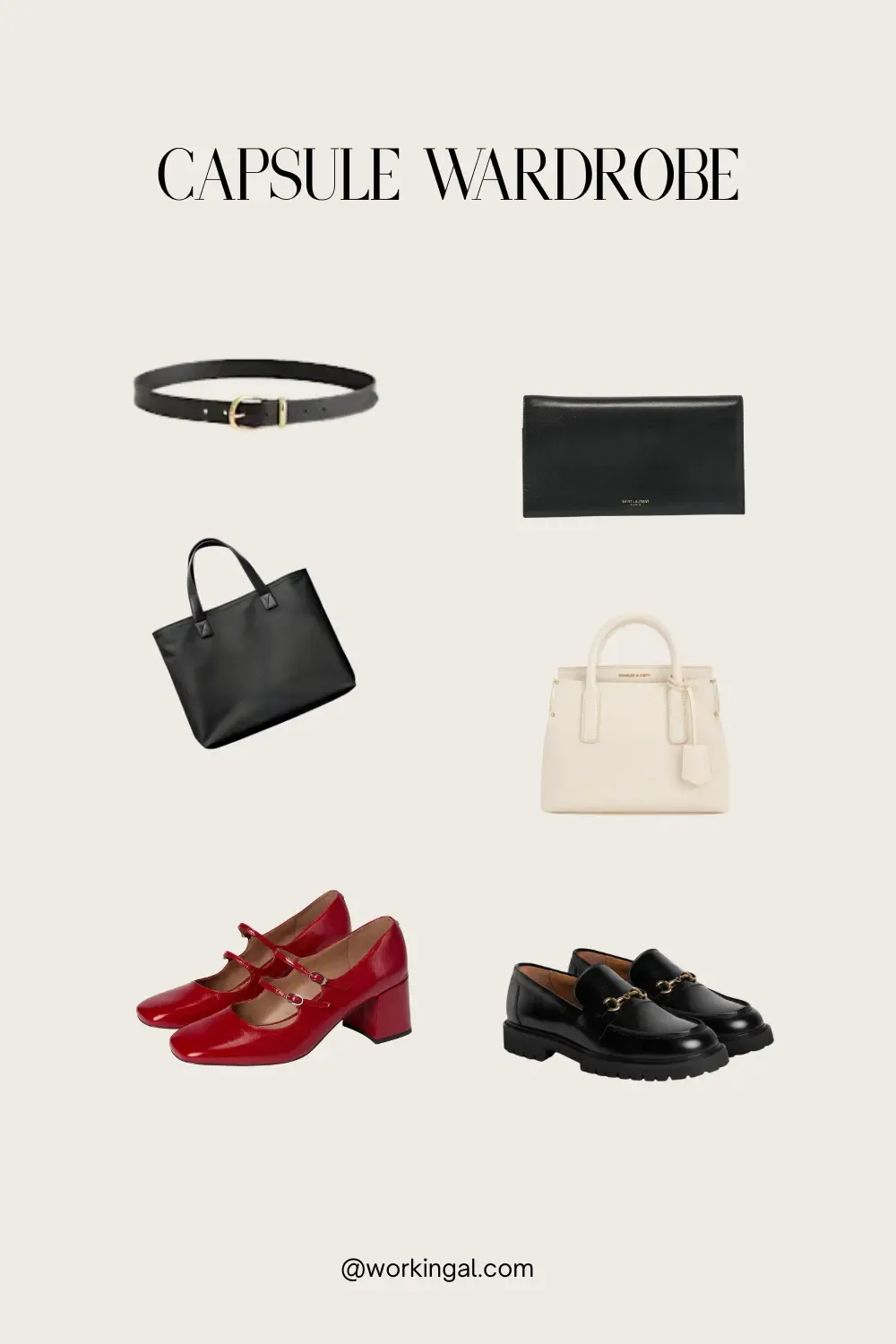
This is the principle that separates a regular capsule wardrobe from a confidence capsule wardrobe. Before any piece earns a permanent place in your closet, it needs to pass the confidence test.
Put on the outfit. Don't just look in the mirror-actually move in it. Sit down. Walk around. Raise your arms. Bend over slightly (you'll be picking things up throughout the day).
Now ask yourself:
Do I feel like I'm wearing these clothes, or am I embodying them? There's a difference. When you're just wearing clothes, you're aware of them all day-adjusting, tugging, worrying. When you're embodying them, you forget about them and focus on everything else.
Would I feel confident running into my ex? My CEO? My biggest inspiration? This is the real test. If you wouldn't feel like your best self running into someone important, the outfit isn't working.
Am I dressing for who I am or who I think I should be? If you're forcing yourself into a style because it's "professional" or "trendy" but it doesn't feel like you, it's not going to make you confident. Authenticity always wins.
Does anything feel off? Too tight across the shoulders? Slightly too short? A bit too trendy for your actual style? Trust your gut. If something feels wrong, it probably is wrong-for you. Not wrong in general, just wrong for your body, your life, your confidence.
If an item doesn't pass the confidence test, it doesn't matter how expensive it was, how trendy it is, or how good it looks on the hanger. It needs to go.
Building Your Capsule: The Practical Approach
Now that you understand the principles, let's talk about the actual process of building your confidence capsule wardrobe.
Step 1: The Brutal Closet Audit
Set aside a few hours when you won't be interrupted. Put on some good music, pour yourself a glass of wine (optional but recommended), and prepare to be honest with yourself.
Pull everything out of your closet. Yes, everything. Then sort into four piles:
Pile 1: Makes Me Feel Confident - These pieces pass the confidence test. They fit well, you love wearing them, and you feel like yourself in them. This is your capsule foundation.
Pile 2: Good Bones, Bad Fit - These pieces have potential but need tailoring. The color is right, the style works for you, but the fit is off. Set these aside for the tailor.
Pile 3: Why Do I Still Have This? - Doesn't fit, doesn't suit your style, hasn't been worn in a year. Be honest: if you haven't worn it in 12 months, you're not going to start now. Donate these.
Pile 4: Maybe - You're not sure. It might work with the right styling, or maybe you're just emotionally attached. Set these aside for 30 days. If you don't naturally reach for them in that time, they join Pile 3.
This process is brutal but necessary. Most of us are holding onto clothes out of guilt ("I spent so much on this!"), aspiration ("I'll wear it when I lose weight"), or inertia ("I've had this since college"). Let it go.
Step 2: Identify Your Gaps
Look at Pile 1-your confident pieces. What patterns do you notice?
- Are you missing basics? (Do you have great statement pieces but no neutral pants?)
- Do you have tops but no bottoms, or vice versa?
- Are you lacking layers for transitional weather?
- Do you need better shoes or bags?
- Could one statement piece unlock multiple outfits?
Make a specific list of what you actually need. Not "new clothes" but "camel wide-leg trousers" or "cognac leather bag" or "black loafers that don't hurt."
Step 3: Shop Strategically (Not Emotionally)
This is where most people derail. They've identified their gaps, but then they go shopping and come home with three trendy tops they don't need and zero of the basics they do need.
The Shopping Rules
- Go with your list - If it's not on the list, you don't buy it. Period. I don't care if it's on sale.
- Quality over quantity - One pair of well-made trousers that fit perfectly is worth more than three cheap pairs that are "fine."
- Consider cost per wear - A \$200 bag you'll carry every day for five years? That's 11 cents per day. A \$30 trendy top you'll wear twice? That's \$15 per wear. Do the math.
Step 4: Build Outfit Formulas
Once you have your capsule pieces, create outfit formulas that you can repeat without thinking. This is the secret to "effortless" style-it's not effortless, it's systematic.
Formula 1: Neutral Top + Neutral Bottom + Statement Shoes
- White shirt + beige pants + leopard loafers
- Gray sweater + jeans + red Mary Janes
Formula 2: Statement Top + Neutral Bottom + Neutral Shoes
- Striped shirt + cream skirt + white slingbacks
- Burgundy blouse + black pants + black loafers
Formula 3: Full Neutral + Statement Bag
- White shirt + beige pants + black shoes + burgundy bag
- Navy cardigan + jeans + white sneakers + cognac tote
Formula 4: Layers Add Interest
- White shirt + jeans + trench coat + neutral bag
- White shirt + pants + blazer + statement shoes
When you have formulas, getting dressed becomes easy. You're not starting from scratch every morning-you're plugging pieces into proven combinations.
The Budget-Friendly Approach
"But this sounds expensive!" I hear you. Building a confidence capsule doesn't require a luxury budget. Here's how to do it smart:
Invest in the foundations - Your white shirt, perfect jeans, neutral pants, and classic shoes should be the best quality you can afford. These are your workhorses, and quality here makes everything else look better.
Save on trends - That leopard print? It doesn't need to be designer. Statement pieces can be affordable because they're not getting worn daily.
Use the cost-per-wear calculation - It's better to save up for one \$200 item you'll wear 100 times than to buy four \$50 items you'll wear five times each.
Sales are your friend (with discipline) - Only buy sale items that were already on your list. Don't buy things just because they're on sale.
Maintaining Your Capsule
A confidence capsule isn't build-it-and-forget-it. It's a living wardrobe that evolves with you.
Seasonal reviews: Every three months, do a mini audit. What's working? What's not? What needs to be replaced?
One in, one out: When you buy something new, donate something old. This keeps your closet from bloating back up.
Immediate alterations: When you buy something that needs hemming or taking in, take it to the tailor that week. Don't let it sit unworn for six months.
Care for your clothes: Dry clean when needed, use a steamer, replace buttons, fix loose hems. Well-maintained clothes always look more expensive.
A confidence capsule wardrobe isn't about having less or spending less (though both are often byproducts). It's about being intentional with every piece you own. It's about clothes that work for you instead of against you.
Because life is too short to waste time standing in front of a full closet feeling like you have nothing to wear. Build a wardrobe where every single piece makes you feel like the confident, capable, authentically you version of yourself.


